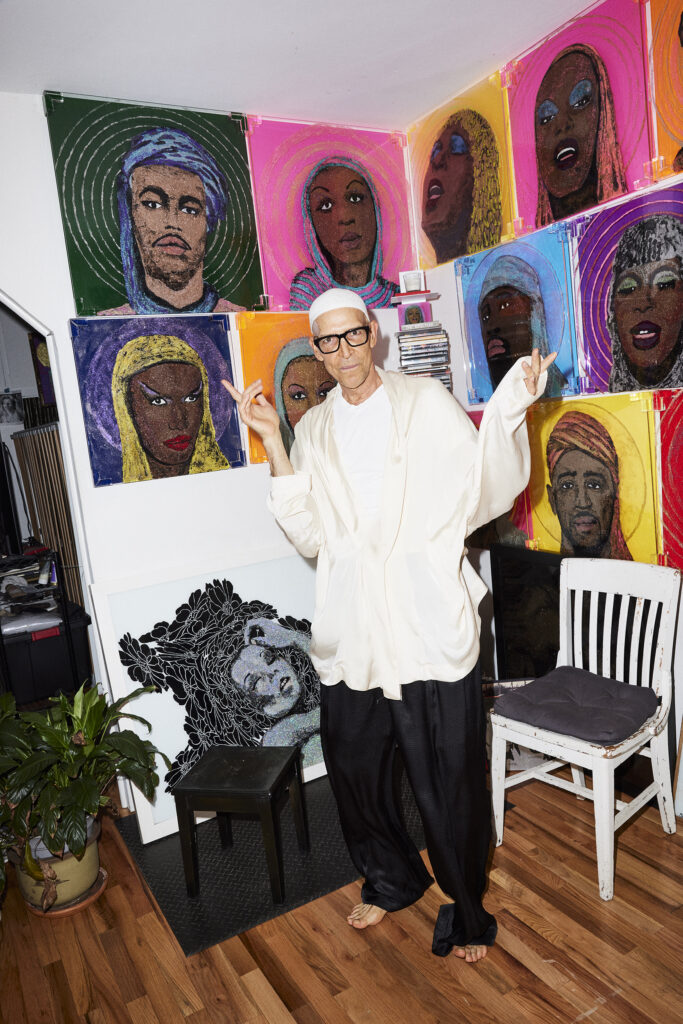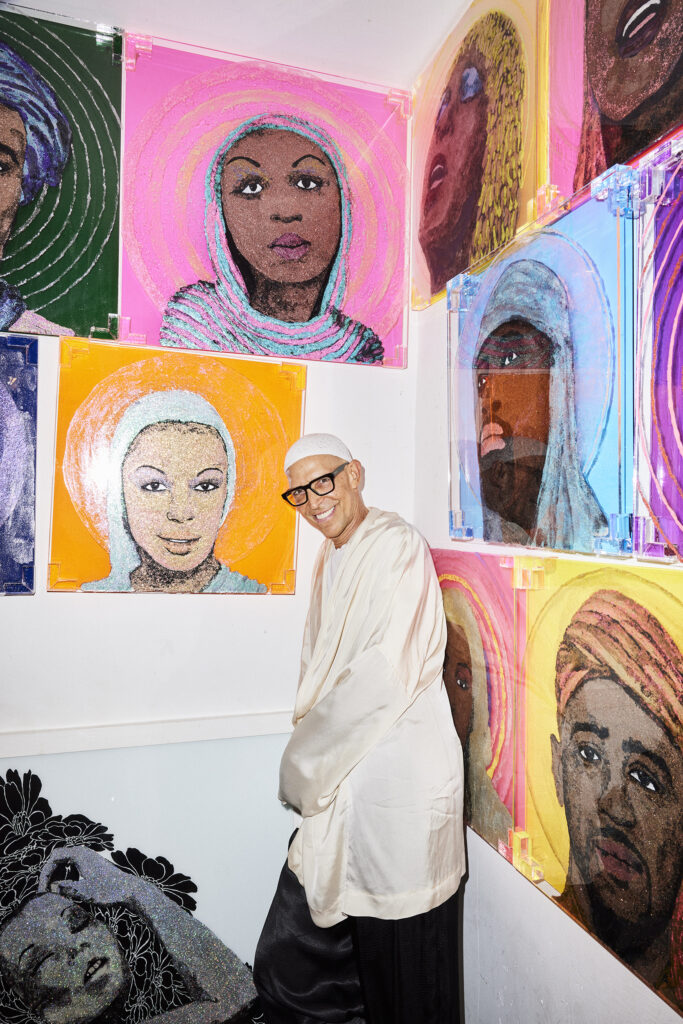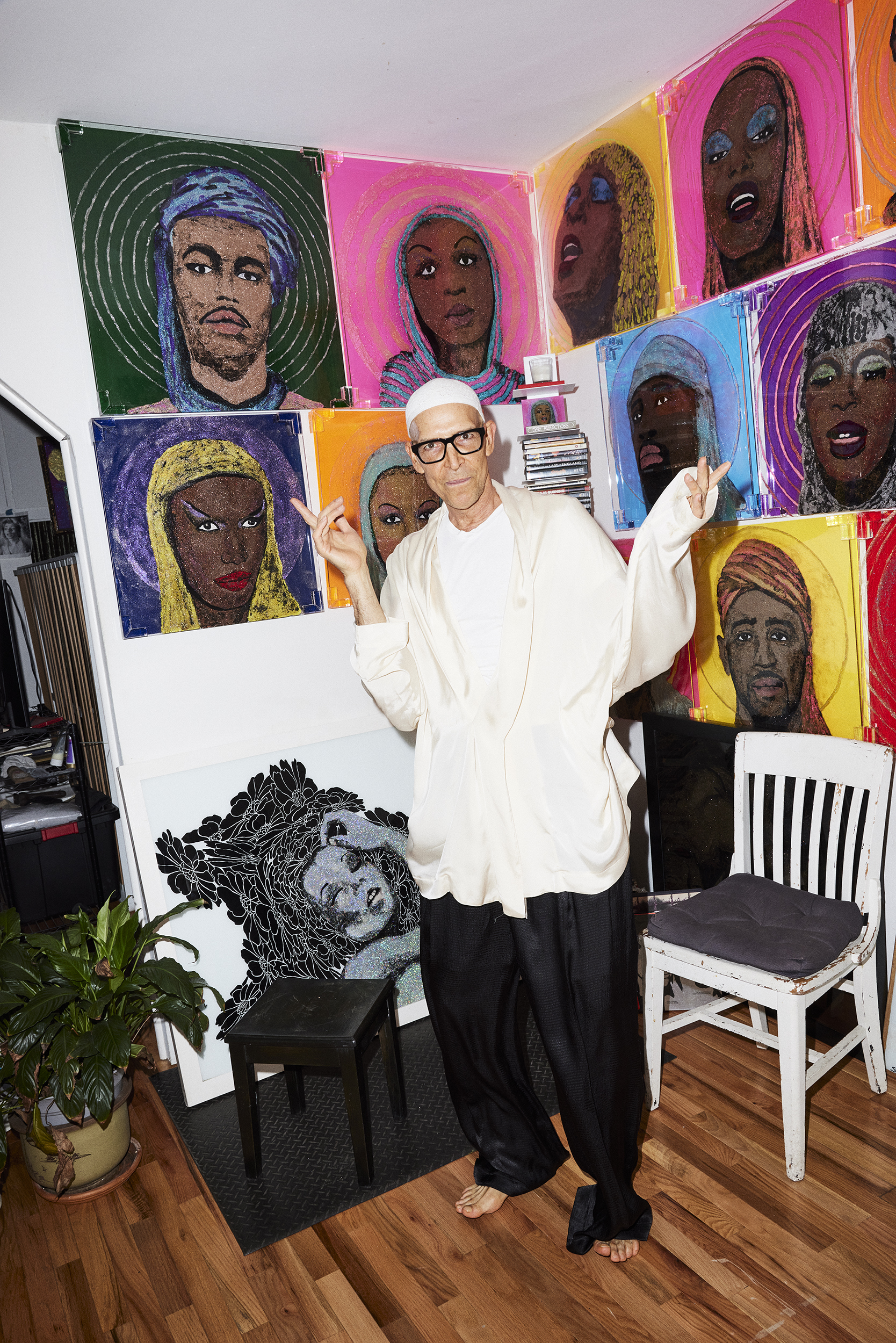Watching Paris Is Burning, the award-winning documentary about New York City’s Harlem-centered ballroom scene in the ’80s, Brooklyn-based artist Richard Alvarez is among old friends. As a mixed-race queer person from the Bronx who grew up in the era, Alvarez is constantly seeking the florid familiarity of the uptown that shaped him. “There’s a certain language, a certain rhythm that we spoke in the street. It’s always soothing and comforting for me to hear,” he adds in his warm and gentle voice.
For queer people of color, it was a massively influential time—while absurdist club kids were peaking on ecstasy at the Limelight, Jean- Michel Basquiat’s career was also hitting a high, as was the number of lives claimed by the AIDS epidemic. It was a decade that dazzled just as much as it devastated. “It was the best of times, it was the worst of times,” says Alvarez, “And then it ended.”
It was while rewatching Jennie Livingston’s documentary several years ago that Alvarez felt the sense of purpose and drive click within the context of this golden but blood-stained epoch. On the screen, he heard the voices of his friends, ballroom icons Venus Xtravaganza and Octavia Saint Laurent, relaying a certain kind of global ambition. “I heard their voices talk to me and say, ‘I wanna be famous. I want people to know who I am,’” he remembers.

At the time, after years of working alongside Sex and the City stylist Patricia Field by day and partying by night, he was volunteering at the Positive Health Project, a public service program supporting trans and queer people living with HIV/AIDS. “I’ve always had this deep conviction of helping and wanting to be helpful. When I heard Venus and Saint Laurent”—the former was found strangled on Christmas Day in 1988 (her murder, Alvarez suspects, was never properly investigated) and the latter passed away in 2009 after a long battle with HIV and cancer—“I thought, ‘How can I make them famous?’” After experimenting with mirrors, Jesus, disco, and, ultimately, glitter, Alvarez decided to memorialize his friends the way he remembers them: heavenly.
Iconography has always been a part of Alvarez’s surroundings. He was raised in a Yoruba Santeria-practicing household, where figurines and colorful depictions of the faith’s several deities were abundant, and exposed to Catholicism by a Mexican babysitter. He jokes that the Catholic church is “iconic” and that, trauma aside, its glamor is not lost on him. While planning out how to make his friends’ dreams come true posthumously, it only felt natural to Alvarez to take the route of canonization, recreating them in the image of saints. “I’m not here to say what anyone defines as being famous, but for me, the ultimate fame is being worshipped. To hold a pure space full of light,” he says looking around his studio, surrounded by exquisite glittering portraits of Venus, Saint Laurent, and several other Black, brown, and trans icons from the past. Giddy with drama, he lets me in on this fact: “You can’t harm a saint because they’re part of a protected class.” Now no one can touch Venus Xtravaganza or Octavia Saint Laurent without getting on their knees first.

V MAGAZINE: What room are we in right now?
RICHARD ALVAREZ: We are in one of my workrooms, but I work every mothafucking room I walk into.
V: Tell us about your work.
RA: They are glitter portraits that you have to dance to get into and experience the feelings that these people convey.
V: What makes your art possible?
RA: Struggle, joy, disco, Grace Jones, Donna Summer, a good beat.
V: When you decided to pursue your passion, was there anything that surprised you?
RA: How effortless it can be when I come from my heart. I don’t have to think, I just have to keep my antenna up.
V: If you weren’t an artist, what would you be doing?
RA: I’d be in Africa helping people. In South America helping people.
V: Who should everyone know about?
RA: Bayard Rustin, Martin Luther King’s speech writer, who got chopped because he was gay.
V: What singular work of art should everyone experience?
RA: I think Basquiat is the one artist who really needs to be seen. It’s so many things, but the one thing it is, is a person of color pushing the boundaries and throwing in the colonizer’s face all of the tools of the colonizer. We need to become more political. We need to become more astute about what’s going on.
V: Best piece of advice you’ve ever received?
RA: Do what makes you happy. I’ve always done that. I worked with Patricia Field. I worked with Andre Balazs. I worked with people from whom I could learn, but also have fun. Life is so short, and I’m fortunate enough to still be here, so I wanna dance and I wanna make a mess. I want to make mistakes and learn from my mistakes.
V: Any New Year’s resolutions?
RA: I hate New Year’s resolutions, but to dance more, to say “yes” more, to be available more, to smile more, to give more love, to receive more love.
V: What should our readers do this weekend?
RA: They should get dressed up, they should have a cocktail, they should go dance their asses off and party like there’s no tomorrow. Kiss a stranger and feel someone’s butt. Everything that you shouldn’t do, you should do—so long as it’s not harmful. Make yourself available because you never know what the cosmos are going to bring you.
Keep up with Richard Alvarez at richardalvarezart.com.
This story appears in the pages of V146: now available for purchase!
Photography Jeremy Liebman
Discover More



